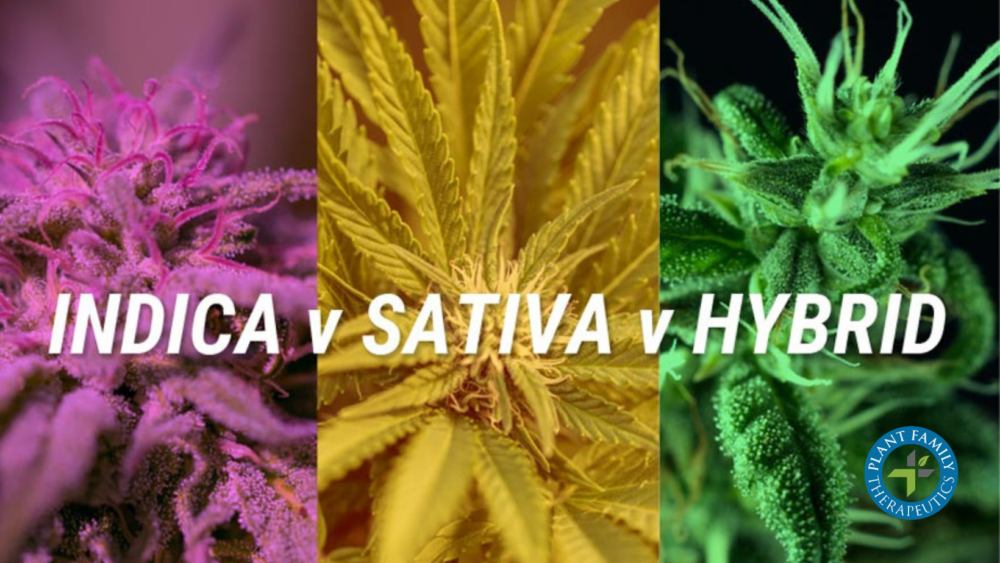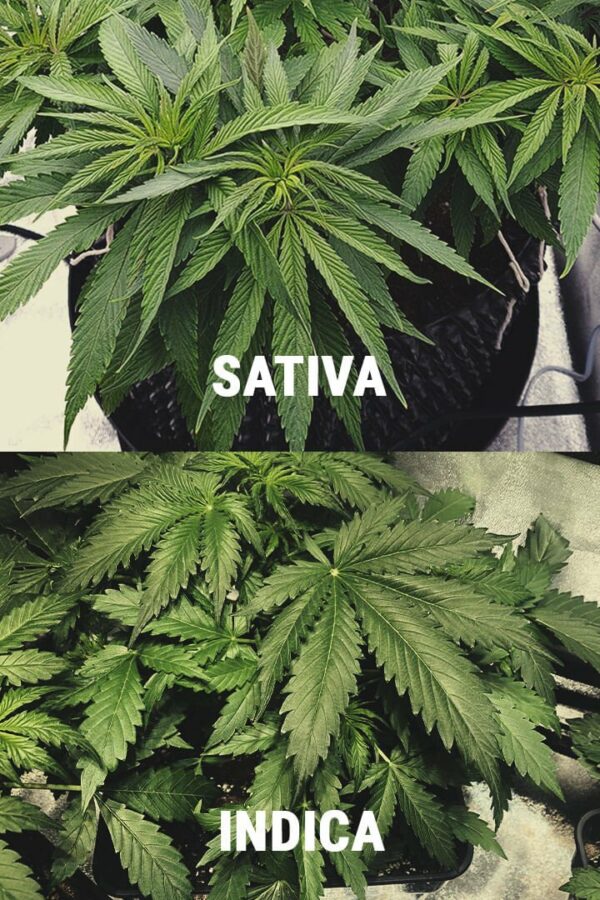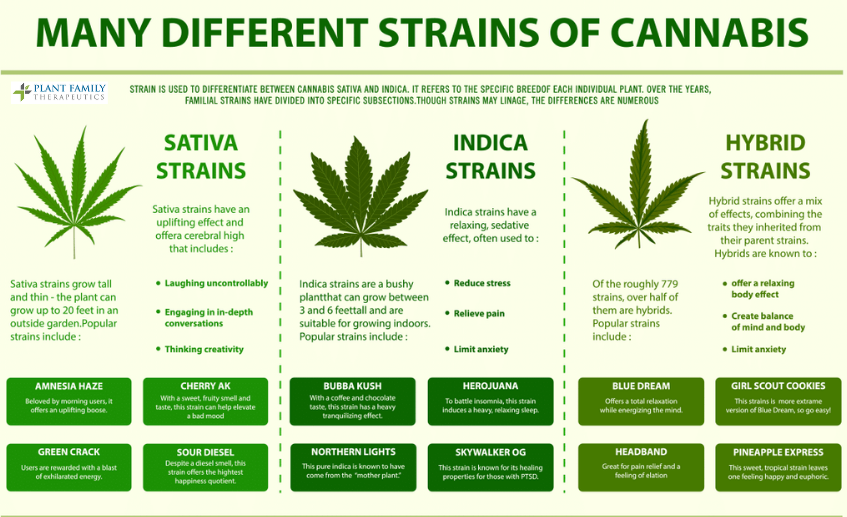
March 9, 2021 – By Sandy Yanez
We all know the cannabis plants Indica and Sativa, but a lot more goes into the chemistry behind how each strain operates on your body. The effects of cannabis vary based on the terpenes within each plant, THC and CBD content, and how many cannabis receptors your body has.
Should a customer strike up a conversation with a PFT patient care representative or ask a question about effects of cannabis, they’ll quickly learn that there are different types of cannabis. Specifically, three types of cannabis are known for differences in their effects, plant origin and appearance, and harvest time.
Before we get into selecting the best strain for you, it’s time to get schooled on the factors you need to know. There are so many strains of cannabis thanks to crossbreeding, hybridization and knowing the properties of each will help pair you with the best bud possible.
Knowing the Different Types of Cannabis
Of the three main types of cannabis, (Indica, Sativa, and Hybrid) indica is known for its sedating effects. This sets it apart from sativa, which is known to be more stimulating. Hybrids are a crossbreed of different strains that can be indica, sativa, and/or hybrids. Strains achieve their effects through the different amounts of cannabinoids such as THC and CBD, as well as terpenes.
Indica
Indica creates a powerful “body” high that’s referred to as “couch lock.” After consuming a strong indica strain, many consumers feel physically heavy, unwilling to move, and extremely relaxed. Indica’s also tend to stimulate the appetite. Due to all of this, general advice for those planning to enjoy an indica is to have a snack and relax in front of the TV or to get comfortable and go to sleep.
Because of its strong physical high and relaxing effects, cannabis indica is good for treating many different medical conditions.
 Sativa
Sativa
While indica is known for causing a physical high, sativa is famous for its “head” high that is felt mostly in the brain. This makes sativa strains a bit more euphoric than indica. It also means that while the brain may feel high, a sativa does not cause the sluggish body high that sends indica consumers to the couch. Sativa strains are often recommended for people who need a burst of creativity or productivity to get things accomplished. Due to its stimulating qualities, people with an anxiety disorder are often warned against consuming strong sativa strains of marijuana.
Just like traditional medications are used for specific purposes due to their varying effects, different cannabis strains can target the symptoms of various medical conditions. Here are a few of the diseases and ailments that sativa strains are often used to treat:
Hybrids
And last but not least, hybrids. There is no one set of effects from hybrid cannabis. Because hybrid strains combine sativas and indicas, the results will depend on which strains were chosen to be bred together. These combined characteristics and effects, which offer the best of both worlds, are fun to play around with.

What Should I Look For In A Strain?
When you’re looking for the right cannabis product for you, keep these considerations in mind:
Your Body Chemistry and Marijuana
So, you’ve done your research and found the perfect strain. You smoke it, but you’re still getting effects like paranoia. It may have to do with your body’s unique way of processing cannabis.
Some of us naturally have more cannabis receptors than others. These make it easier for THC to bind, and in turn, will increase the intensity of your high. An intense high may sound great on paper but going over your threshold leads to undesirable results.
In this case, it’s helpful to find a strain that has a CBD and THC balance. You’ll still get your high, but the CBD naturally makes it less overpowering by limiting the amount of THC that binds to your receptors.
Most people don’t know that CBD can tame an out-of-control high or boost the effects based on how and when you use it.
Research and Smoke
There’s cannabis for every occasion. Smoking can enhance an outdoor hike, increase productivity, and help you relax. Understanding the complexities behind the big, general categories will help you understand different types of cannabis and which cannabis to choose.
Explore our blog to find even more information.
References: